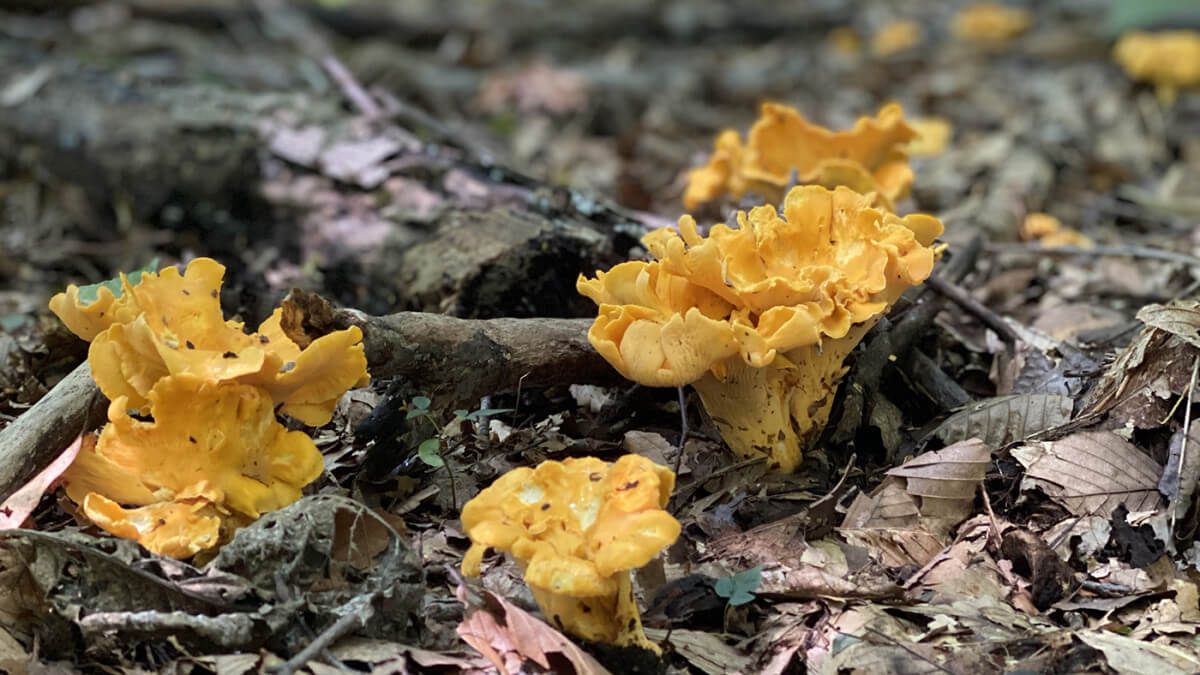- Savage Blog
- Chanterelle Mushrooms – Foolproof Foraging
Chanterelle Mushrooms – Foolproof Foraging

If you’re going to try foraging for wild mushrooms, you need to know what you’re doing. Poisonous fungi don’t warn you with unpleasant smells or tastes. Luckily, there are quite a few choice mushrooms which are easily identified. Chanterelle mushrooms are in my top five on this list. They have outstanding culinary value and only one toxic look-alike. You would be doing yourself a favor to look for them while you’re in the woods this year.
In New Jersey where I live, they usually begin fruiting in mid-July and will continue late into September if the weather is right. Much depends on the rain, which needs to fall generously for a few weeks in a row to get a good flush going. In the Pacific Northwest, they’re most often found in fall. Chanterelles have a symbiotic relationship, also known as a mycorhizzal relationship, with the roots of hardwood trees, so you find them growing from the soil near their favorite tree partners. I primarily have success among Oak, Beech, and Hickory stands. The older the stand of trees, the better.

These kinds of fungi are long lived. They may be older than the trees in some places. The mushrooms that we harvest are merely the reproductive “fruiting body” of the organism. This means that harvesting these mushrooms is much like harvesting the fruit from a tree above ground. It does not harm either to harvest their fruit, and it’s possible that this harvest is in fact the desired outcome. The beauty of this is that mycorhizzal fungi will fruit in the exact same location again and again, so once you find a patch of Chanterelles, you can harvest it for many years. I have patches of morels that I have picked four or five years in a row, and Chanterelles that have fruited reliably since I found my first patches three years ago. In all cases, the yields will vary based on how good the conditions were in the given year.
Chanterelles can be identified with 100% certainty by learning three simple characteristics. First, it must be growing out of the soil within a hardwood forest. It’s toxic look-alike, the Jack-O-Lantern, is a rot fungus so it will be on dead wood. Second, it will not have true gills. The underside will be either smooth or wrinkled. The toxic Jack will have gills. Third, the color will be yellowish orange, orange, or red orange on the outside and white on the inside. The tummy no-no mushroom will not be white on the inside.
As with almost all wild mushrooms, Chanterelles need to be cooked before they’re enjoyed. Depending on how wet things are when you harvest, they can be up to 90% water, so ideal texture and effective browning requires them to be cooked down a bit. You may also want to brush them with a toothbrush or similar tool in order to remove soil which sometimes sticks to them after heavy rains.
These things are so delicious that I like to cook them very simply to ensure they’re the star of the plate. This recipe is my standard method for taste testing all new species I pick. Prepared this way, it can be a venison burger topping, a side, or an entire entree depending on the quantity involved. If you cook more than you can eat, vacuum seal and freeze your cooked mushrooms for later. With Chanterelles, cooked then frozen does a much better job of preserving their wonderful taste and texture than does dehydration.
Chanterelles with Onion and Garlic
When returning home from a day in the woods, I keep it simple with this dish. This dish does not require close adherence to measurements to be great.
Ingredients:
- 1/2 Lb Chanterelle Mushrooms - Sliced 1/4” thick
- 1 Red or Yellow Onion - Sliced
- 2 -3 Cloves Garlic - Minced
- 2 Tbsp Butter
- Salt and Pepper to taste
Method:
- Slice your mushrooms and onion 1/4’’ thick.
- Heat a large skillet to medium heat.
- Dump in mushrooms and onions, season, and cook down for a few minutes.
- Add your butter and stir fry at slightly higher temp. Any oil will work but butter will knock your socks off.
- When mushrooms are starting to brown, add garlic.
- The dish is finished when the garlic and chanterelles are nicely browned.

